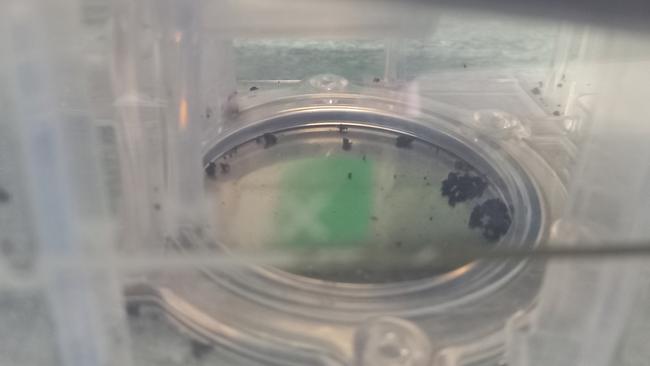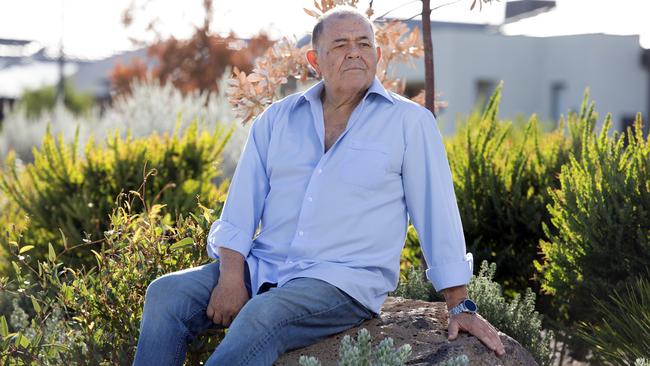Inside the class action against Philips Electronics over recall of sleep therapy machine
Thousands of Aussies who relied on a ventilator, which was later found to have potentially released fatal particles, are fighting for compensation.

Health
Don't miss out on the headlines from Health. Followed categories will be added to My News.
Exclusive: Thousands of Aussies who relied on a respiratory ventilator which was later found to have potentially released fatal particles into their lungs as they slept, are taking on a global electronics giant in a class action.
More than 76,000 Philips Electronics respiratory care machines – to help with serious disorders such as sleep apnoea, where breathing repeatedly stops and starts – were recalled in 2021, due to concerns about potential health issues, including “carcinogenic effects”.
So far, more than 3500 former users have joined the class action.
The recall was made after a type of industrial foam in the machine, designed to reduce noise, was found to degrade over time, potentially releasing dangerous particles and chemicals including formaldehyde, a compound used in fertiliser, dyes and glues that has been linked to respiratory issues and certain cancers.
The Therapeutic Goods Administration (TGA) warned that prolonged and repeated use of the affected machines may result in a range of symptoms including headaches, nausea, inflammatory responses, asthma, and potentially even carcinogenic effects.
Angry former users claim that Philips was aware of complaints from customers dating as far back as 2015.
Some allege the faulty machines – which use a hose connected to a mask or nosepiece to deliver constant and steady air pressure – had a life changing impact on their health.
Lead claimant in the case, retired nurse Eva Lindbloom, 78, was diagnosed with chronic swelling of her airways and asthma and now requires a daily inhaler to help her breathe. Her lung specialist confirmed in a letter that her condition could be linked to use of the faulty device.

“I’m frightened of the health impacts from using this device and very angry that the company knew about this issue for years and did nothing,” Ms Lindbloom, who lives in Mandurah, WA, said.
Another named in the class action, retired cleaner Steve Martini, 60, from Gladstone, Queensland, thought he must be dying after he developed nosebleeds, crippling headaches and extreme nausea.
“The last four months of using the machine, I really didn’t feel like myself at all,” Mr Martini said.
“My face began to swell. Dizziness became so bad that I couldn’t close my eyes without falling over. None of the doctors I saw could work out what was wrong with me. It got progressively worse until the point that I was too unwell to even leave my home. I thought I was dying.”
After the recall Mr Martini purchased a replacement from a different manufacturer, and his symptoms disappeared.

Another user, Luciano Tomai claims a tumour found in his kidney and stones in his liver are a direct result of inhaling toxic substances leaking from the Philips respiratory machine he used to sleep safely every night.
The 66-year-old from Melbourne purchased the device in 2011 after being diagnosed with sleep apnoea.
In 2015 a tumour was found in his kidney and the following year part of his liver was removed after “unusual” stones were spotted.
He had a kidney transplant in 2019.
“My health has gone downhill quite rapidly since I started using the machine,” Mr Tomai said. “I’m a different person now, it’s been very difficult to cope with and has completely changed my life.”
Mr Tomai said when he received a letter from Philips in 2021 warning him of potential dangerous side effects arising from the machine, including “carcinogenic effects and toxicity to kidneys and liver”, it was a shock. He now believes it was the machine that led him to suffer issues with his kidney and liver.

Chairman of GMP Law, Gerard Malouf, who took on the class action after the previous law firm withdrew, said claimants deserved compensation for pain, suffering and economic loss.
“This machine was designed to alleviate health issues, but has in some cases resulted in users requiring surgery trying to manage the side effects,” Mr Malouf said.
The class action alleges that Philips failed to warn consumers of the hazards of breathing in the particles and chemicals, and also alleges the products were not only defective, but Philips failed to test and evaluate the machines adequately when providing them for sale in the Australian market.
However, court documents show the previous legal firm handling the lawsuit withdrew because it considered “there to be insufficient evidence to warrant the continuation of the class action”.
A spokesman for Philips said “the recall decision was made in an abundance of caution, after careful consideration of a reasonable worst-case scenario, rather than deferring the recall decision to conduct more definitive testing”.
He said Philips, together with five independent, certified testing laboratories and third-party experts, have undertaken tests and “concluded that use of the sleep therapy devices is not expected to result in appreciable harm to health in patients”.
Further testing is ongoing.
In the meantime, Philips has repaired or replaced 94 per cent of its registered faulty devices in Australia.
GMP Law encouraged other users who may have been impacted by the faulty devices to contact them through a website philipscpapclaim.com.au.
`
More Coverage
Originally published as Inside the class action against Philips Electronics over recall of sleep therapy machine





